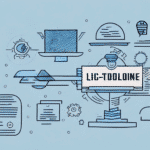Importance of On-Time Delivery in Houston
On-time delivery is a critical factor in the delivery industry, directly impacting customer satisfaction and business success. In Houston, a city known for its large population and heavy traffic, ensuring timely deliveries can be particularly challenging. Timely deliveries help build trust, enhance a company's reputation, and foster customer loyalty. According to a Statista report, over 80% of consumers consider delivery speed when choosing a service, highlighting its significance.
Impact on Customer Satisfaction and Retention
Customers expect their deliveries to arrive on time. Delays can lead to frustration, negatively affecting their perception of the company and increasing the likelihood of them seeking alternatives. Reliable delivery services not only satisfy customers but also encourage repeat business and positive word-of-mouth referrals.
Operational Efficiency and Cost Management
Efficient delivery operations minimize the need for multiple delivery attempts, reducing fuel costs and vehicle wear and tear. Streamlined processes contribute to lower operational costs and higher profitability.
Navigating Houston's Traffic Patterns
Understanding Houston's traffic dynamics is essential for optimizing delivery routes and schedules. The city's traffic congestion, especially during peak hours, can significantly affect delivery times. Utilizing data-driven insights into traffic patterns allows delivery companies to plan more effectively.
Peak Traffic Hours and Congestion Hotspots
Houston experiences heavy traffic during morning (7-9 AM) and evening (4-7 PM) rush hours. Major highways like I-10, I-45, and Beltway 8 are prone to congestion. Avoiding these routes during peak times can enhance delivery efficiency.
Impact of Events and Roadworks
Events such as sports games, concerts, and road construction can disrupt normal traffic flow. Staying informed about scheduled events and planned roadworks helps in adjusting delivery routes proactively.
Utilizing Traffic Data and Real-Time Updates
Leveraging services like the Greater Houston Partnership provides access to real-time traffic updates and congestion reports, enabling dynamic route adjustments.
Effective Route Planning and Optimization
Strategic route planning is vital for minimizing delivery times and maximizing efficiency. Employing advanced route optimization software can significantly enhance delivery performance.
Route Optimization Software
Tools such as Geopointe and Samsara analyze traffic data, delivery locations, and vehicle capacity to generate the most efficient routes.
Prioritizing Deliveries Based on Urgency
Categorizing deliveries by priority ensures that urgent packages, especially perishable goods, are addressed promptly. This reduces the risk of spoilage and enhances customer satisfaction.
Real-Time GPS Tracking
Implementing GPS tracking allows for real-time monitoring of delivery vehicles, enabling quick responses to any unexpected delays or route deviations.
Leveraging Technology for Delivery Optimization
Technology plays a pivotal role in enhancing delivery operations, from tracking packages to automating routine tasks.
Automated Scheduling and Dispatch
Automation tools streamline the scheduling process, ensuring optimal allocation of resources and reducing manual errors. Platforms like DispatchTrack offer comprehensive scheduling solutions.
Customer Communication Tools
Mobile apps and SMS notifications keep customers informed about their delivery status, improving transparency and trust. Services like Twill provide robust communication interfaces.
Advanced Analytics and Reporting
Data analytics tools help in assessing delivery performance, identifying bottlenecks, and making informed decisions to enhance efficiency. Tools such as Tableau offer powerful data visualization capabilities.
Managing Delays and High-Volume Periods
Delivery companies must be prepared to handle unexpected delays and spikes in delivery volumes to maintain their service quality.
Contingency Planning for Delays
Developing backup plans, such as alternative routes and having standby drivers, ensures that deliveries can proceed smoothly despite unforeseen obstacles.
Scalable Fleet Management
During peak seasons or high-demand periods, scaling the fleet size by adding temporary drivers or vehicles helps manage the increased workload effectively.
Efficient Resource Allocation
Allocating resources based on demand forecasts ensures that delivery operations remain uninterrupted and efficient even during rush hours.
Future Trends in Delivery Services
The delivery industry is continually evolving, with new trends and innovations shaping its future. Staying abreast of these changes is essential for maintaining a competitive edge.
Autonomous Delivery Vehicles and Drones
Technologies like autonomous vehicles and drones are set to revolutionize the delivery landscape by reducing delivery times and operational costs. Companies like Amazon are pioneering these advancements.
Artificial Intelligence and Machine Learning
AI and ML are enhancing route optimization, predictive maintenance, and demand forecasting, leading to smarter and more efficient delivery operations.
Sustainable Delivery Practices
With increasing environmental concerns, sustainable practices such as electric delivery vehicles and eco-friendly packaging are becoming integral to delivery strategies.
Integration of Blockchain for Transparency
Blockchain technology offers enhanced transparency and security in tracking deliveries, ensuring data integrity and trust among stakeholders.
Case Studies of Successful On-Time Delivery Companies in Houston
Examining the strategies of top-performing delivery companies in Houston provides valuable insights into best practices and effective operational techniques.
Company A: Leveraging Technology for Efficiency
Company A implemented advanced route optimization software and real-time GPS tracking, resulting in a 20% reduction in delivery times and a 15% increase in customer satisfaction rates.
Company B: Exceptional Customer Communication
By adopting comprehensive communication tools, Company B improved transparency, leading to a 25% increase in repeat customers and positive reviews.
Company C: Sustainable Delivery Initiatives
Focusing on sustainability, Company C introduced electric vehicles and eco-friendly packaging, attracting environmentally conscious customers and enhancing brand reputation.
Conclusion
Ensuring on-time delivery in Houston requires a multifaceted approach, encompassing effective route planning, leveraging technology, managing traffic patterns, and maintaining robust communication channels. By adopting best practices and staying informed about industry trends, delivery companies can overcome the challenges posed by Houston's traffic and deliver exceptional service consistently.




















